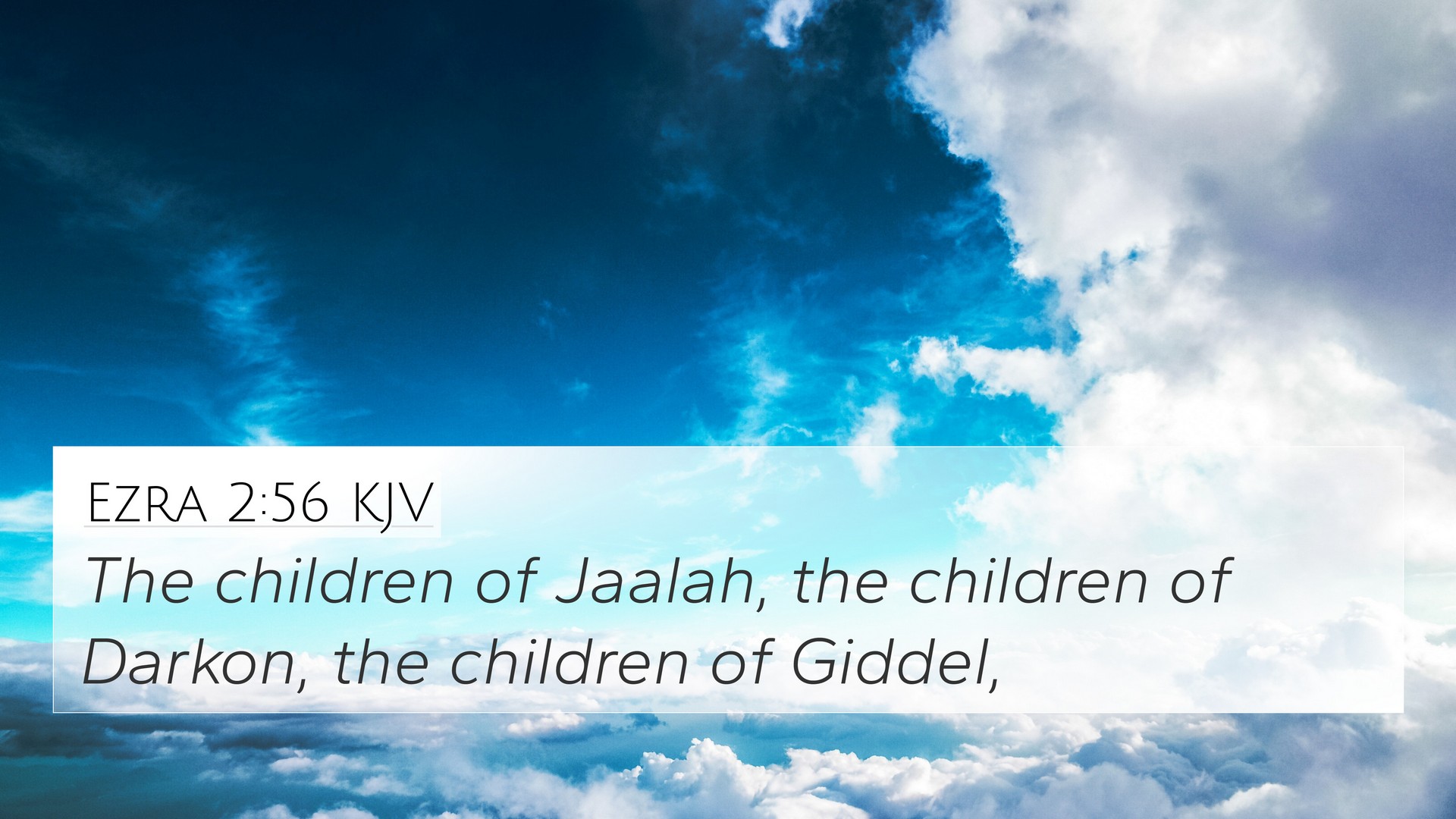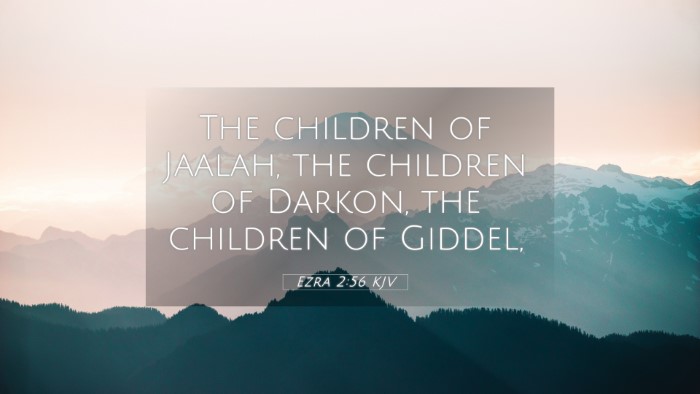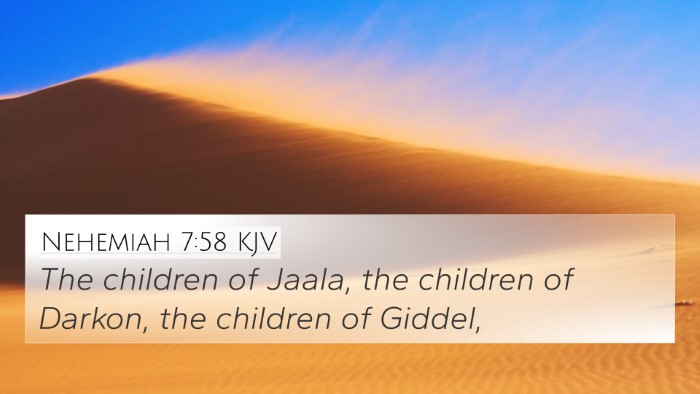Bible Verse Meaning of Ezra 2:56
Ezra 2:56 states: "The children of the porters: the children of Shallum, the children of Ater, the children of Talmon, the children of Akkub, the children of Hatita, the children of Sobai, in all an hundred thirty and nine."
Overview
This verse enumerates the descendants of specific families who served as porters (or gatekeepers) in the Temple of Jerusalem. Understanding the roles and responsibilities of these individuals sheds light on the organization of the ancient Hebrew community as they returned from exile.
Commentary Insights
-
Matthew Henry:
Henry emphasizes the importance of the gatekeepers in the Temple, serving as both physical guardians and a symbol of spiritual vigilance. The numbers signify a well-organized community reviving their worship duties.
-
Albert Barnes:
Barnes notes the significance of names and their meanings in the Jewish tradition, where genealogy was vital. He adds that being a porter was a respected position, indicating the people’s commitment to the sacred duties of Temple service.
-
Adam Clarke:
Clarke remarks on the practicality of having porters designated for specific roles, highlighting that order and structure were essential in Temple operations. Each family had a heritage linked to their service, reinforcing community ties.
Meaning and Significance
The listing of families in Ezra 2:56 serves to affirm God's faithfulness in restoring His people and maintaining the ordered worship in the Temple. It illustrates the continuity of religious practice and communal identity among the returnees from Babylonian exile.
Bible Cross-References
- 1 Chronicles 9:17-22: Relates to the roles of porters in the Temple.
- Nehemiah 11:19: Discusses the assignment of porters during the post-exilic period.
- Psalm 84:10: Expressions of the value of serving in the house of God.
- 1 Chronicles 26:1-19: Provides details about the divisions of the gatekeepers.
- Luke 12:35: Offers a New Testament perspective on readiness and service.
- John 10:7-9: References the concept of gates and doorways in a spiritual sense.
- Revelation 21:12: Symbolizes the gates of the New Jerusalem, linking past and future worship.
Thematic Connections
Ezra 2:56 illustrates the theme of God’s faithfulness in restoring His people and their roles in worship, linking to broader Biblical narratives about community, service, and the sacredness of worship.
Tools for Cross-Referencing
To further explore these themes and connections, consider using the following resources:
- Bible Concordance: Locate specific verses and their meanings.
- Bible Cross-reference Guide: Help identify relationships between passages.
- Cross-reference Bible Study: A systematic approach to exploring connections.
- Comprehensive Bible Cross-reference Materials: Tools designed for in-depth study.
Inter-Biblical Dialogue
Exploring Ezra 2:56 not only enriches understanding of the Old Testament context but also dialogues with New Testament themes of community and ministry. The concept of gatekeeping not only fulfills a literal role but also echoes in spiritual teachings about how believers are called to safeguard and promote vital faith aspects.
Conclusion
In summary, Ezra 2:56 serves as a reminder of God's continued provision for worship and order within His community. Reflecting on the role of families as porters reveals lessons about faithfulness, service, and unity, each vital for understanding the overarching narrative of Scripture.



